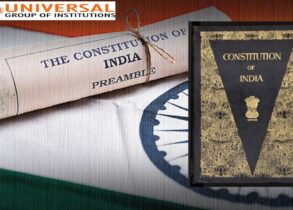Discuss the significance of the Doctrines of Pith and Substance and Colourable Legislation with respect to Centre-state relations in India.
Federalism is one of the basic features of the Indian Constitution. The Constitution of India provides for a division of legislative powers and functions between the Union and different constituent units of the country. However, there arise several Center-State conflicts related to certain matters, which are resolved by courts through various doctrines like Doctrine of Pith and substance as well as the Doctrine of Colourable Legislation. Doctrine of Pith and substance: The phrase “Pith and Substance” means true nature and character. This doctrine determines whether a specific law relating to a particular subject falls within the legitimate power of a legislature. In such cases, the court looks at the substance of the matter. Thus, for example, if the substance falls within Union List, then the incidental encroachment by the law on the State List does not make it invalid. Doctrine of Colourable Legislation basically states that when anything is prohibited directly, it is also prohibited indirectly. It depicts the notion that legislation cannot be used under ‘color’ or ‘guise’ of power, which was conferred for one purpose and used for some other purpose, which is otherwise not valid. Significance of Doctrine of Pith and Substance and Doctrine of Colourable Legislation for Center-State relations
- Both doctrines provide a degree of flexibility in the otherwise rigid scheme of distribution of powers under 7th Schedule of the Constitution.
- It prevents absolute intrusion of legislative powers by evaluating the ‘content’ of enactment and then determining which list the specific subject matter fell within.
○ While the Doctrine of Pith and Substance is helpful in determining the List under which a particular legislation falls, the ‘colourable legislation theory’ implies a restriction of the legislature’s law-making power and to check the transgression of legislative authorities.
○ Doctrine of Colourable Legislation is built upon the founding stones of the Doctrine of Separation of Power.
- The doctrine of Colourable Legislation is a tool devised and applied by the Supreme Court to interpret Constitutional provisions to avoid any unjust or fraudulent use of Indian laws. Both the doctrines have been relevant in a number of cases in which the Centre and the States have fought for legislative primacy. Overlaps may exist merely because one legislation is linked to another, either directly or indirectly. It is therefore important that the courts continue using these doctrines to carry out their responsibilities without error.









